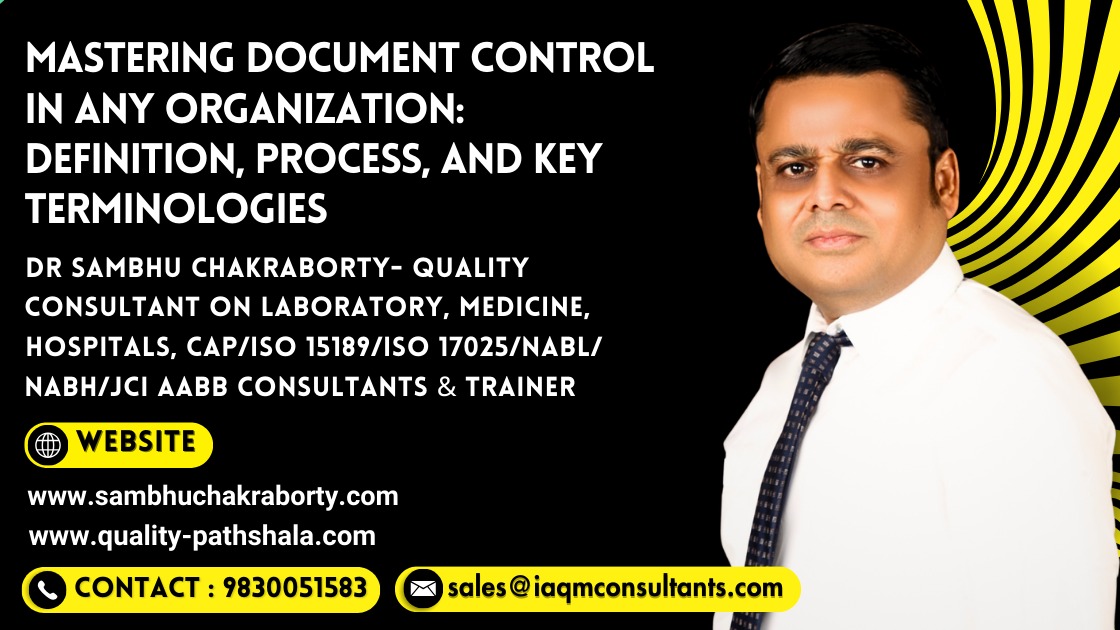Introduction to Document Control In the organizational context, a document refers to any content, whether printed or digital, that conveys information necessary for work, delineates a subject, or records facts. Effective document control is vital for ensuring that these documents serve their intended purpose reliably and accurately.
Understanding Documents and Records There is a fundamental distinction between a document and a record. While both are essential, they serve different purposes. A document is dynamic and can be updated or modified; it represents the living knowledge and procedures within an organization. Conversely, a record is static, signifying a completed action or state that must remain unaltered for historical accuracy.
The Role and Importance of Document Control Document control is the spine of an organization’s quality management system. It ensures that documents are created, reviewed, distributed, and updated in a systematic, traceable, and controlled manner. The primary role of document control is to manage the life cycle of documents, prevent the use of obsolete information, and ensure that the latest information is always accessible to those who need it.
Responsibilities in Document Control A document controller, quality manager, or a person in a similar responsible position often oversees the document control system. This role involves a “single window” approach to managing all documentation, ensuring consistency and traceability.
The Process of Document Control
- Initiating a Document Control System: The process starts by appointing a document controller who will oversee the entire documentation system within the organization.
- Document Creation: Competent personnel prepare documents, ensuring content accuracy and relevance to organizational processes.
- Document Approval: Documents are reviewed and approved by authorized personnel, known as the document approval authority, before being issued.
- Document Issue and Revision: When a document is first released, it is assigned an issue number (e.g., Issue No. 01) and a revision number (e.g., Revision No. 00). Revisions indicate partial changes to a document, while a new issue indicates more substantial changes or a complete rewrite.
- Distribution of Controlled Copies: Once approved, controlled copies are distributed. These copies are directly linked to the master copy and are updated whenever the master copy changes.
- Document Change and Amendment: Changes to a document are not made arbitrarily. A formal document change note must be submitted, reviewed, and approved by the document approval authority. Amendment records are maintained to track the history of changes.
- Identification of Changes: Changes within a document are typically indicated by markings such as italicization, bold text, color coding, or underlining to make the altered sections easily identifiable.
- Handling Obsolete Documents: When a document is superseded, it is withdrawn from active use and may be retained as an obsolete copy for records.
- Uncontrolled Copies: These are copies of documents that are not subject to updates when the master copy changes. They are not used within the quality system of the organization.
Document Control Terminology in Practice The terminology of document control is integral to understanding and executing the process:
- Master Copy: The original document that is kept and maintained as a reference point for all controlled copies.
- Controlled Copy: A copy that is managed in alignment with the master copy; it changes when the master copy does.
- Uncontrolled Copy: A copy that is not updated with the master copy and does not form part of the organization’s quality system.
- Issue: The first release of a new document.
- Revision: Partial changes to a document under control, which do not necessitate a new issue.
- Obsolete Copy: A copy that is kept for records once it is no longer active.
- Document Change Note: A formal proposal for changes to a document.
- Document Approval Authority: A person with designated authority to approve documents.
- Issue Authority: The person responsible for issuing documents, typically the document controller.
- Prepared By: The person with the necessary knowledge to write and prepare the document.
- Amendment Record: A history of changes made to a document, usually recorded at the beginning.
Conclusion Effective document control is a critical component of any quality management system. It requires a clear understanding of the terminologies and a strict adherence to the processes that ensure documents are current, accurate, and available to those who need them. As organizations evolve, so do their documents; thus, the role of document control is ever-present and dynamic, safeguarding the integrity and utility of documented information.
About the Author
Dr. Sambhu Chakraborty is a distinguished consultant in quality accreditation for laboratories and hospitals. With a leadership portfolio that includes directorial roles in two laboratory organizations and a consulting firm, as well as chairman of IOL ( An ILAC stakeholder organisation), Dr. Chakraborty is a respected voice in the field. For further engagement or inquiries, Dr. Chakraborty can be contacted through email at director@iaqmconsultants.com and info@sambhuchakraborty.com. Additional resources and contact information are available on his websites,https://www.quality-pathshala.com and https://www.sambhuchakraborty.com, or via WhatsApp at +919830051583

Very good